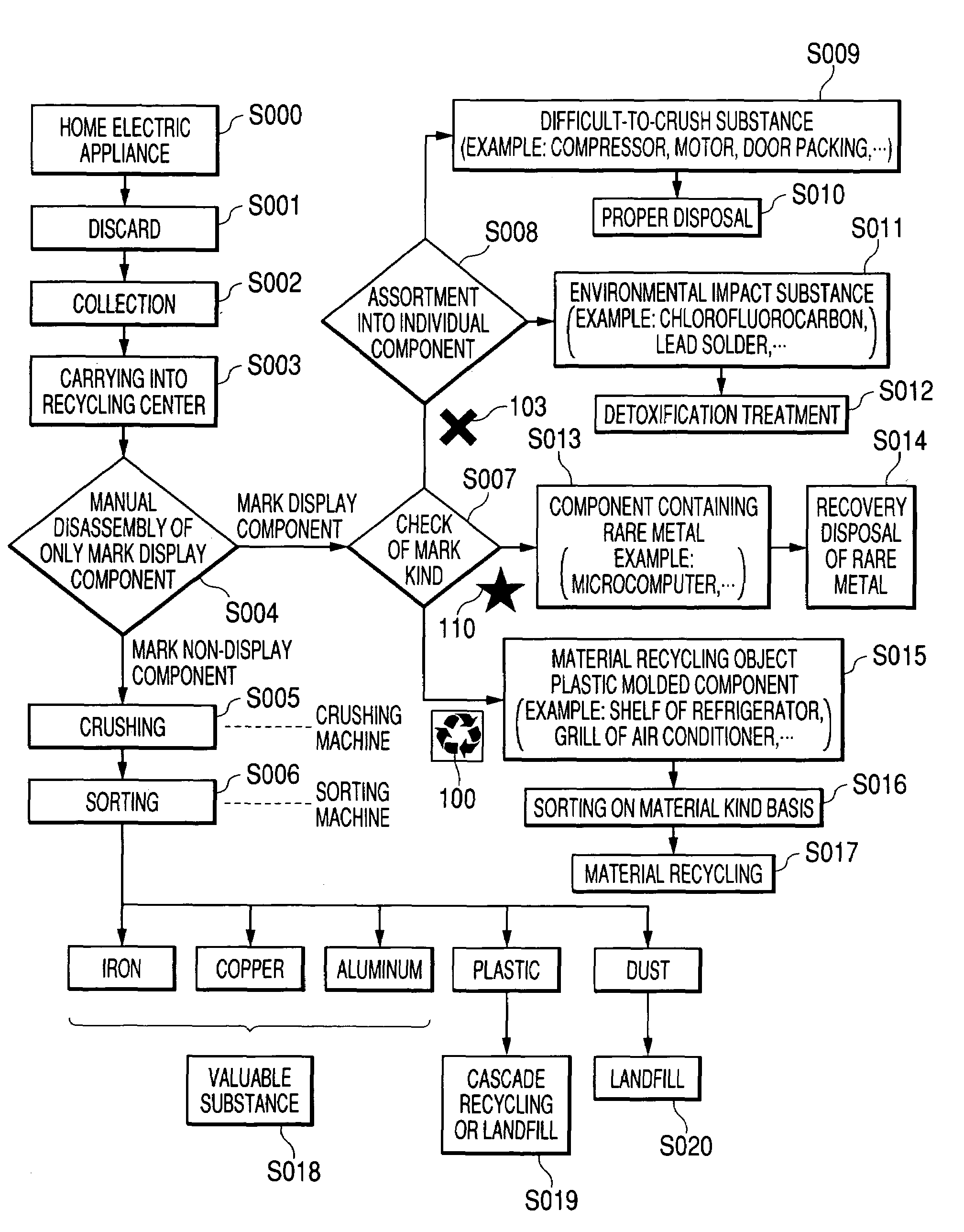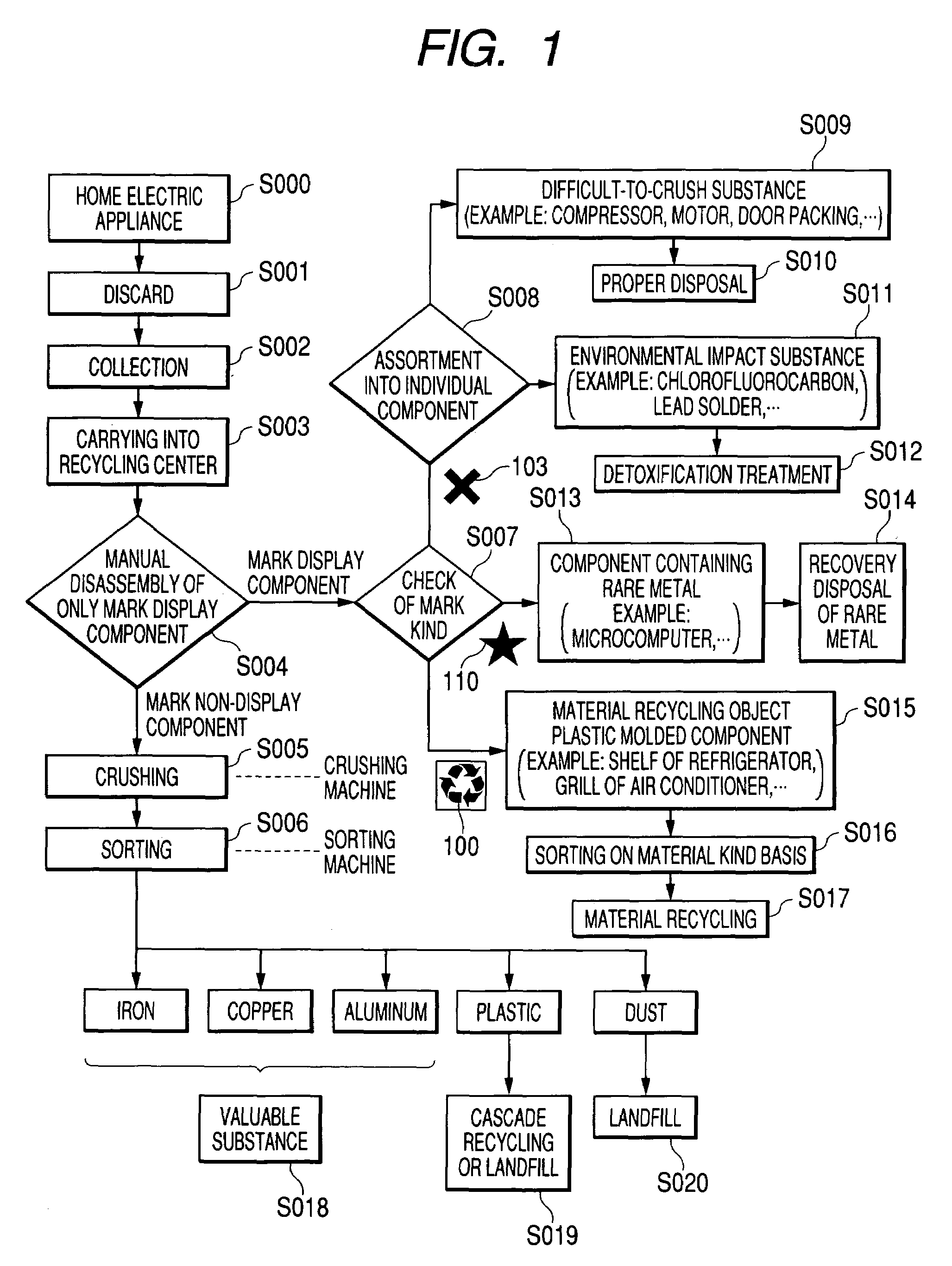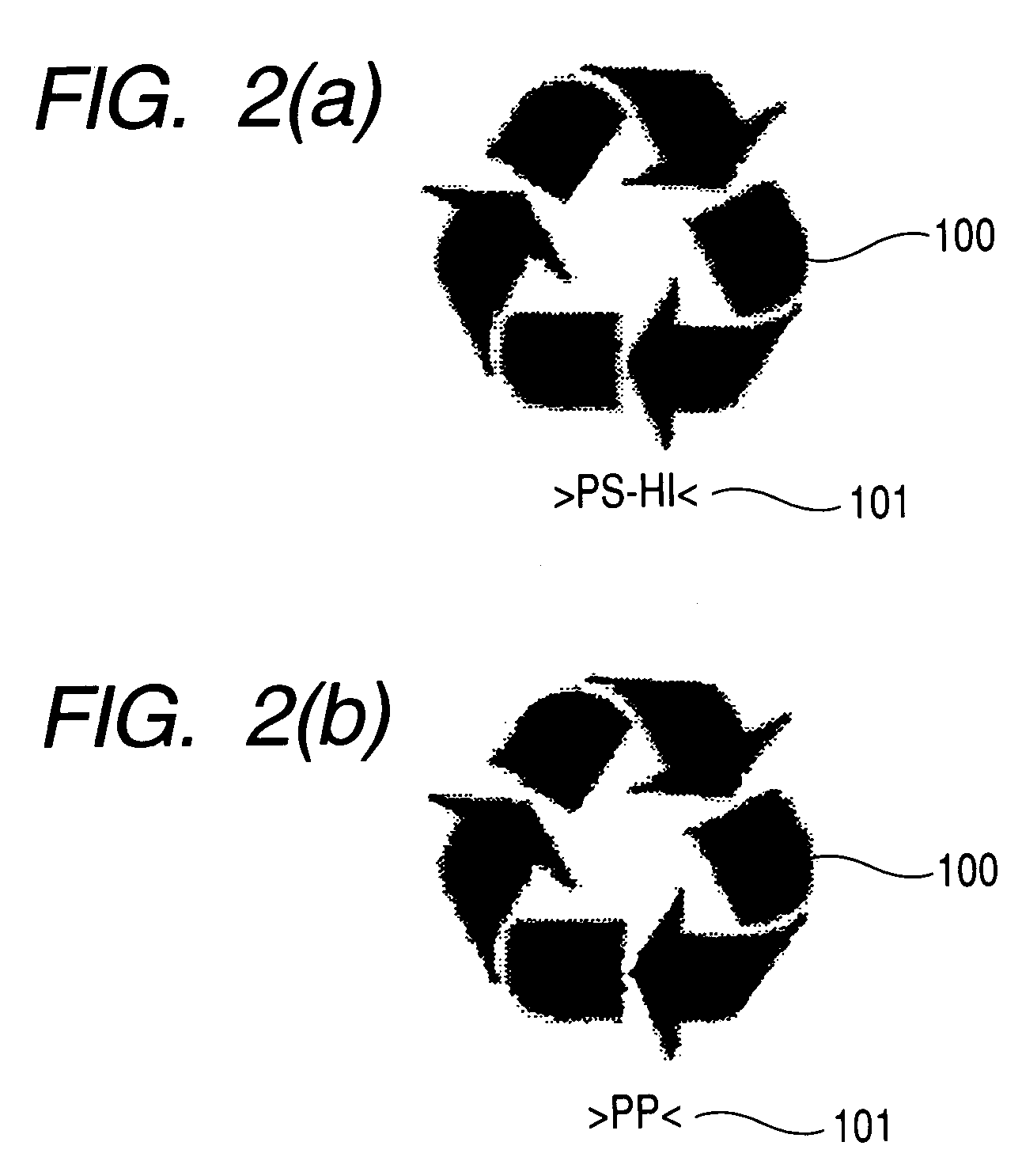Recovery method for an electric appliance
a technology for recovering methods and electric appliances, applied in the field of discarding electric appliances, can solve the problems of poor influence on crushing machines, inability to recover well, and inability to achieve large improvement only by recycling efficiency of home electric appliances, so as to reduce the cost of recycling disposal, prevent crushing machine failure, and improve recovery work efficiency
- Summary
- Abstract
- Description
- Claims
- Application Information
AI Technical Summary
Benefits of technology
Problems solved by technology
Method used
Image
Examples
first embodiment
[0052]FIG. 1 is a flowchart describing a recycling method of the invention. It is the flowchart showing disposal in waste home electric appliance disposal facilities such as a recycling center, and when a home electric appliance S000 is discarded S001 after the home electric appliance is used, waste products are first collected S002 by public institutions such as a city government, professional agencies for handling waste products, distributors of home electric appliances, manufacturers and soon. The waste products collected in a particular place etc. are carried S003 into the recycling center. In the recycling center, a structure easy to disassemble with respect to components to be disassembled directly manually or using a tool is previously adopted for electric appliances such as a television, a washing machine or air conditioning equipment brought as recycled products and also, a mark which means that this component is manually disassembled is displayed. Only this mark display co...
PUM
| Property | Measurement | Unit |
|---|---|---|
| time | aaaaa | aaaaa |
| time | aaaaa | aaaaa |
| separation | aaaaa | aaaaa |
Abstract
Description
Claims
Application Information
 Login to View More
Login to View More - R&D
- Intellectual Property
- Life Sciences
- Materials
- Tech Scout
- Unparalleled Data Quality
- Higher Quality Content
- 60% Fewer Hallucinations
Browse by: Latest US Patents, China's latest patents, Technical Efficacy Thesaurus, Application Domain, Technology Topic, Popular Technical Reports.
© 2025 PatSnap. All rights reserved.Legal|Privacy policy|Modern Slavery Act Transparency Statement|Sitemap|About US| Contact US: help@patsnap.com



